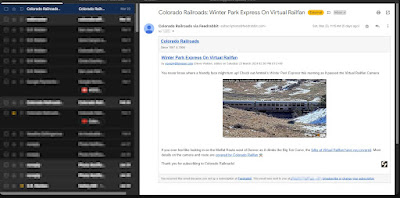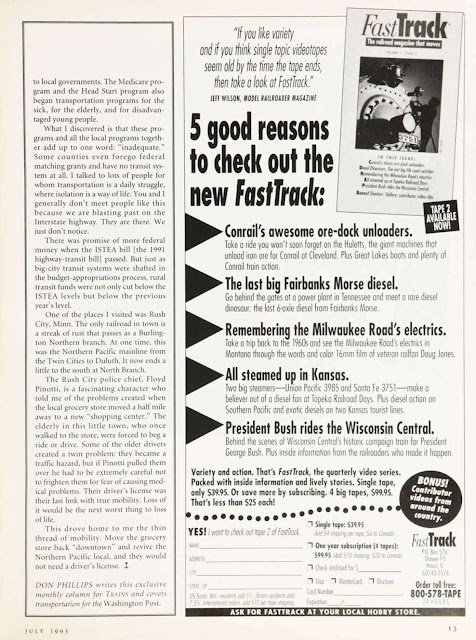Over 142 years of coal-fired steaming is finally coming to an end in Durango.
Let that sink in a moment. Your grandfather never knew a day without coal affecting his life. Whether he knew it or not, coal fired his morning whether he used an electric toaster or a gas-fired water heater. The coffee he drank was brought to his country by a steam ship or roasted by steam or brewed and somewhere in the loop, there was, as likely as not, coal.
When I was a kid, my class and I toured the massive Coors Brewery in Golden, on the other side of Clear Creek from the Colorado Railroad Museum. In the bowels of the plant, generating the power for the entire complex, boiling mash, and heating the entire plant as well as the Colorado School of Mines! Inside the plant, massive boilers fired by natural gas and--you got it--coal surged with energy for all that light, heat and cold, to make the best beer in the world (micro brews notwithstanding), along with the best geological minds known to man. I might be a bit biased because my uncle Clifford graduated from there. Inside the furnace, a large, flaming tornado of coal whips around in the combustion chamber in a scene that is slightly terrifying even while it is contained inside by convective air currents and steel walls. The power plant continues to burn on even today, but with more flexibility.1
A coal fire inside a locomotive is no fire tornado but no less intense; a scene worthy of a medieval poetic vision of hell. Small mountains and valleys aglow in hundreds and thousands of shades of luminescent orange. Open the door used to feed the iron horse and a wall of heat rolls out and bathes the entire landing with radiant energy. Leave the door open too long and it threatens to set the denim and wool worn in the cab alight. Children, especially those fascinated by fire, visit the cab with their parents to get a peep of the firebox. Watch the warmth fill their cheeks and their eyes alight with that amazing flame that powered us out of the sticks.
For the men and women firing a locomotive with coal is part science and part art. The engineer may command the locomotive but the fireman is the power and heart of the locomotive. Fire it well and you arrive at the destination on time or early. Fire it worse and the speed suffers, the schedule falls behind, or it could be that you don't arrive at all. On mountain railroads like the Rio Grande and Colorado & Southern, along with their surviving remnants, coal firing meant a specific dynamic for the cab.
It was said long ago, "The engineer sleeps on the uphill side, the fireman sleeps on the downhill," Little sleeping ever happened for either side of the cab, obviously. Nevertheless, when the train is going uphill, an engineer need only make sure the engine is not slipping. Meanwhile the fireman must shovel a great deal of coal to generate all the steam the engine is using, pulling against all the cars and gravity. He needs to make sure there's an even bed of coal burning and burning as evenly as possible, even while jostling and shaking its way up the grade. Downhill, conversely, the fireman rests more as the engine is mostly idle, only generating air pressure for the engineer. His job is to keep the entire train from gravity's clutches with the air brakes. An engineer who wasted steam and a fireman who wasted coal meant problems.
The art of steaming is still alive and well because every steam railroad uses the same basic principles to drive a locomotive. The art of firing a locomotive is going the way of the manual transmission and handmade consumables, unfortunately. There are several reasons, and not just the obvious one.
The first and most obvious is that coal produces ash in the form of cinders. Not only must these cinders be cleaned out every day at a special location called the ash pit, but during combustion, small bits of still-burning coal in the process of becoming ash can be carried through the boiler tubes and out the stack with the smoke of the engine. The more the engine works, the more ash it produces. The harder the steam works, the more forceful the stack ejects the ash, carrying it further. On windy days and in dry conditions, this has become a serious risk to the railroad and, sadly, more than one wildfire has sprung from an ill-fated cinder that escaped and flew too far. This makes the railroad a risk to every family in the valley. Mitigation of removing combustible fuels and screens and water misting the stack have not been enough some years. In fact, the very scenery of San Juan National Forest the train travels through is put at risk of burning to ashes. And you thought the cinders hurt your eyes!
Another reason is the coating of ash that has drifted down over the Animas River valley. Some years, in downtown Durango it was palpable. Although the railroad has worked in recent decades to decrease the burden on surrounding businesses by using a wood-based alternative fuel to bunker the locomotives overnight.
This brings us to a hidden reason for switching from coal. Every night, the roundhouse and the engines idled in the yard must bunker each coal fire. The boiler of each engine to be used the next day needs to be kept warm with a fire that continues to burn through the night, tended overnight by staff. No bunker, and a crew would have to show up much earlier each morning and consequently run into service time limits. Instead, for more than 14 decades, a hostler tends each fire in the roundhouse as the engines doze with steam wisps and the quiet of a small downtown.
For months, the mechanical staff have labored to switch the insides of each Mikado from coal to oil. Rather than working a bed of fire, a fireman simply works the atomizer and heat to bring the fuel to life in the firebox. The oil is kept warm, lest it get too thick to form the mist, but otherwise requires no skill and no magic to coax rock to burn. Last Mikado to change is engine 481 which will undergo conversion this spring. From the Durango & Silverton Narrow Gauge Railroad blog,
... The D&SNG’s last active coal burning locomotive, number 481, will see its final winter as a coal burning engine before undergoing a conversion to burn oil later in 2024. “A few years ago I always thought we would want to keep a coal burner,” said Randy Babcock, AHR Chief Mechanical Officer “the reality is that it just doesn’t make business sense to maintain a locomotive that we only intend to use a quarter of the year.” [archive]
Much as I would love for the only continuous, all Colorado narrow gauge heritage railroad to continue to burn the same fuel they've always used from Hesperus,2 the railroad has to live in harmony with everyone else in their valley. Two towns and two counties rely more than a little on this enterprise that prospers every summer and winter with a great amount of tourism, the majority from outside the region.
The change has already been very apparent on engines emerging from Durango each day the past summer and fall, with engine stacks free of cinder screens or water halos and, my sister will be happy to note, children will have to go somewhere else to get a cinder in their eye!3 I will miss the smell of coal smoke, but its a small price to pay for the health and wellbeing of a living, breathing steam engine program showing everyone what nineteenth century tech can do for people in the 2020s.
As of February, seats for early summer season are readily available. Come May, that will absolutely change. We're all counting on it! ⚒
Footnotes
1 - Colorado Energy Nations Boiler 5 Upgrade Project at Powermag.com and at archive.org
2 - King II mine - Global Energy Monitor wiki
3 - When I asked my sister if she remembered her trip 45 years later, she said that her eyes still hurt. Bless her heart!













